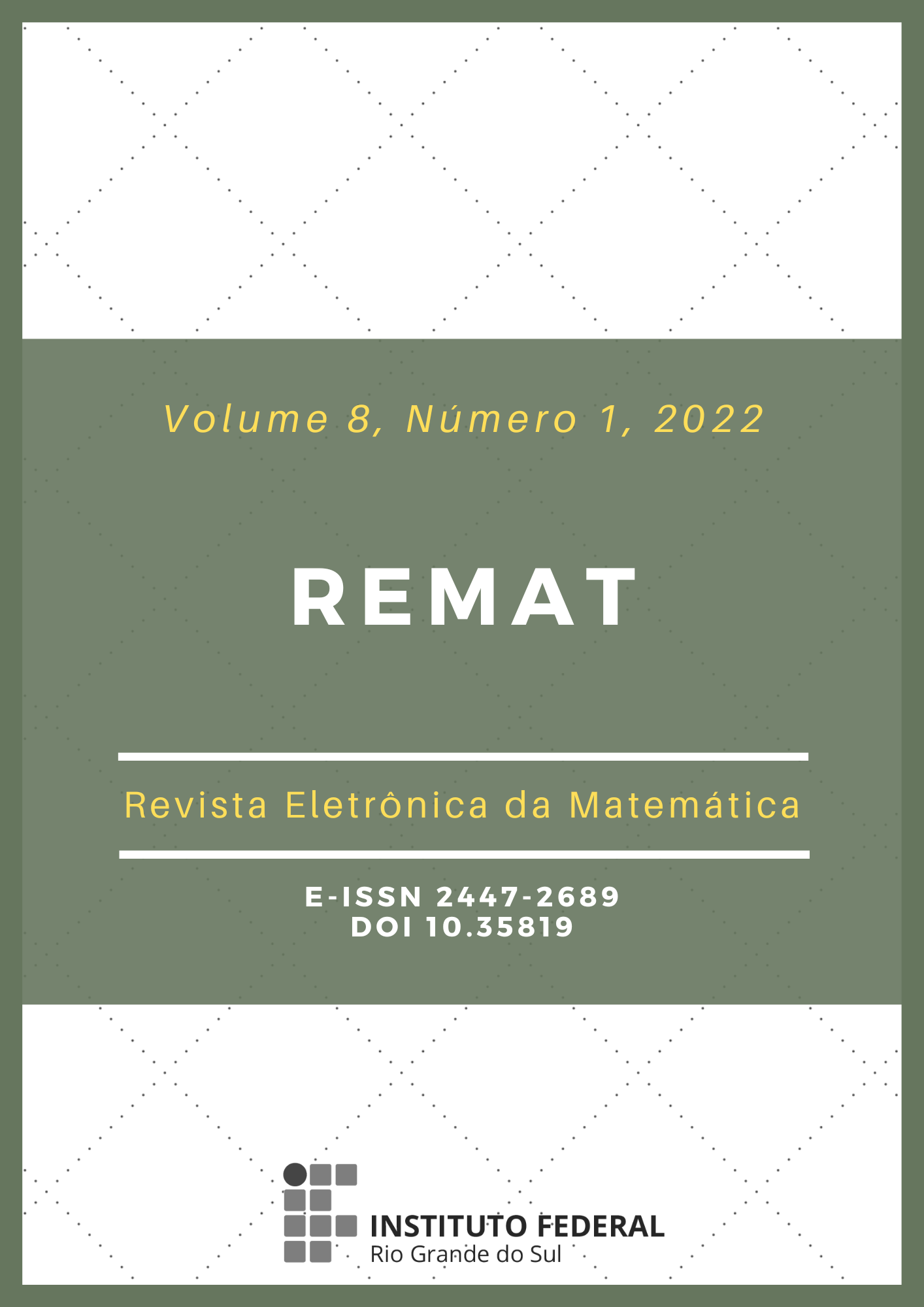Euler's Method to solve the Verhulst equation applied to fungal growth
DOI:
https://doi.org/10.35819/remat2022v8i1id5526Keywords:
Logistic Growth, Trunk Diseases in Grapevines, Euler Method, Modified Euler MethodAbstract
Mathematical modeling enables several contributions to development of society collaborating with scientific and technological advances. Through models, real phenomena are represented as is the case of fungal growth kinetics. This work uses the Verhulst equation, which characterizes the growth of a population up to the maximum capacity of the medium, solving it numerically by the one and two-stage Euler Method. The methodology is validated by comparing numerical and analytical solution available in the literature. The Verhulst model is applied considering some experimental parameters, which makes possible to determine the numerical solution of the equation in one and two stages. The simulated results presented a correspondence with the analytical solution with a smaller relative error between the solutions with the two-stage method. Thus, other methods can be adopted in future works aiming to minimize the error. Additionally, there is the possibility of employing the Euler method in more complex models since the exact solution is not always known.
Downloads
References
ALMANÇA, M. A. K.; LERIN, S.; CAVALCANTI, F. R. Doenças da videira. Informe Agropecuário, Belo Horizonte, v. 36, n. 289, p. 7-12, 2015. Disponível em: https://www.livrariaepamig.com.br/wp-content/uploads/2021/06/IA-289-pgs-iniciais.pdf. Acesso em: 4 mar. 2022.
ATKINSON, K.; HAN, W.; STEWART, D. E. Numerical solution of ordinary differential equations. New Jersey: John Wiley & Sons, 2009.
BOYCE, W. E.; DIPRIMA, R. C. Equações diferenciais elementares e problemas de valores de contorno. Rio de Janeiro: Guanabara Dois, 1985.
DE MENDON, P. T. V.; LIMA, D. S.; BARROS, G. G.; MENEZES, M. S.; MEZZOMO, I. Comparativo dos Métodos de Euler e Heun na resolução de equações diferenciais de primeira ordem. Proceeding Series of the Brazilian Society of Computational and Applied Mathematics, São Carlos, v. 6, n. 1, p. 10070-1-10070-2, 2018. Disponível em: https://proceedings.sbmac.org.br/sbmac/article/view/1757. Acesso em: 4 mar. 2022.
JUSTO, A. R. J.; SAUTER, E.; AZEVEDO, F. S.; GUIDI, L. F.; KONZEN, P. H. de A. (Org.). Cálculo Numérico: Um livro colaborativo. Versão Scilab. 19 ago. 2020. Disponível em: https://www.ufrgs.br/reamat/CalculoNumerico/livro-sci/livro-sci.pdf. Acesso em: 25 nov. 2021.
PERIN, R.Z.; FIORENTIN, J. STROSCHEIN, S. D.; ALMANÇA, M. A. K. Equações diferenciais no crescimento de fungos causadores de doenças de tronco em videira. REMAT: Revista Eletrônica da Matemática, Bento Gonçalves, RS, v. 5, n. 2, p. 192-208, 1 jul. 2019. DOI: https://doi.org/10.35819/remat2019v5i2id3376.
RODRIGUES, D. S.; HAUSER, E. B. Modelo Logístico de Verhulst e Métodos Numéricos na Análise do Censo Populacional Mundial. Proceeding Series of the Brazilian Society of Computational and Applied Mathematics, São Carlos, v. 2, n. 1, p. 10068-1-10068-3, 2014. DOI: https://doi.org/10.5540/03.2014.002.01.0068.
TREFETHEN, L. N.; BAU III, D. Numerical Linear Algebra. Philadelphia: SIAM, 1997.
ÚRBEZ-TORRES, J. R.; LEAVITT, G. M.; VOEGEL, T. M.; GUBLER, W. D. Identification and distribution of Botryosphaeria spp. associated with grapevine cankers in California. Plant Disease, [S. l.], v. 90, n. 12, p. 1490-1503, 2006. DOI: https://doi.org/10.1094/PD-90-1490.
ZILL, D. G. Equações Diferenciais com Aplicações em Modelagem. Tradução da 9ª edição Norte Americana. São Paulo: Cengace Learning, 2011.
Downloads
Published
Issue
Section
License
Copyright (c) 2022 REMAT: Revista Eletrônica da Matemática

This work is licensed under a Creative Commons Attribution 4.0 International License.
REMAT retains the copyright of published articles, having the right to first publication of the work, mention of first publication in the journal in other published media and distribution of parts or of the work as a whole in order to promote the magazine.
This is an open access journal, which means that all content is available free of charge, at no cost to the user or his institution. Users are permitted to read, download, copy, distribute, print, search or link the full texts of the articles, or use them for any other legal purpose, without requesting prior permission from the magazine or the author. This statement is in accordance with the BOAI definition of open access.













 https://orcid.org/0000-0002-0893-7426
https://orcid.org/0000-0002-0893-7426


















